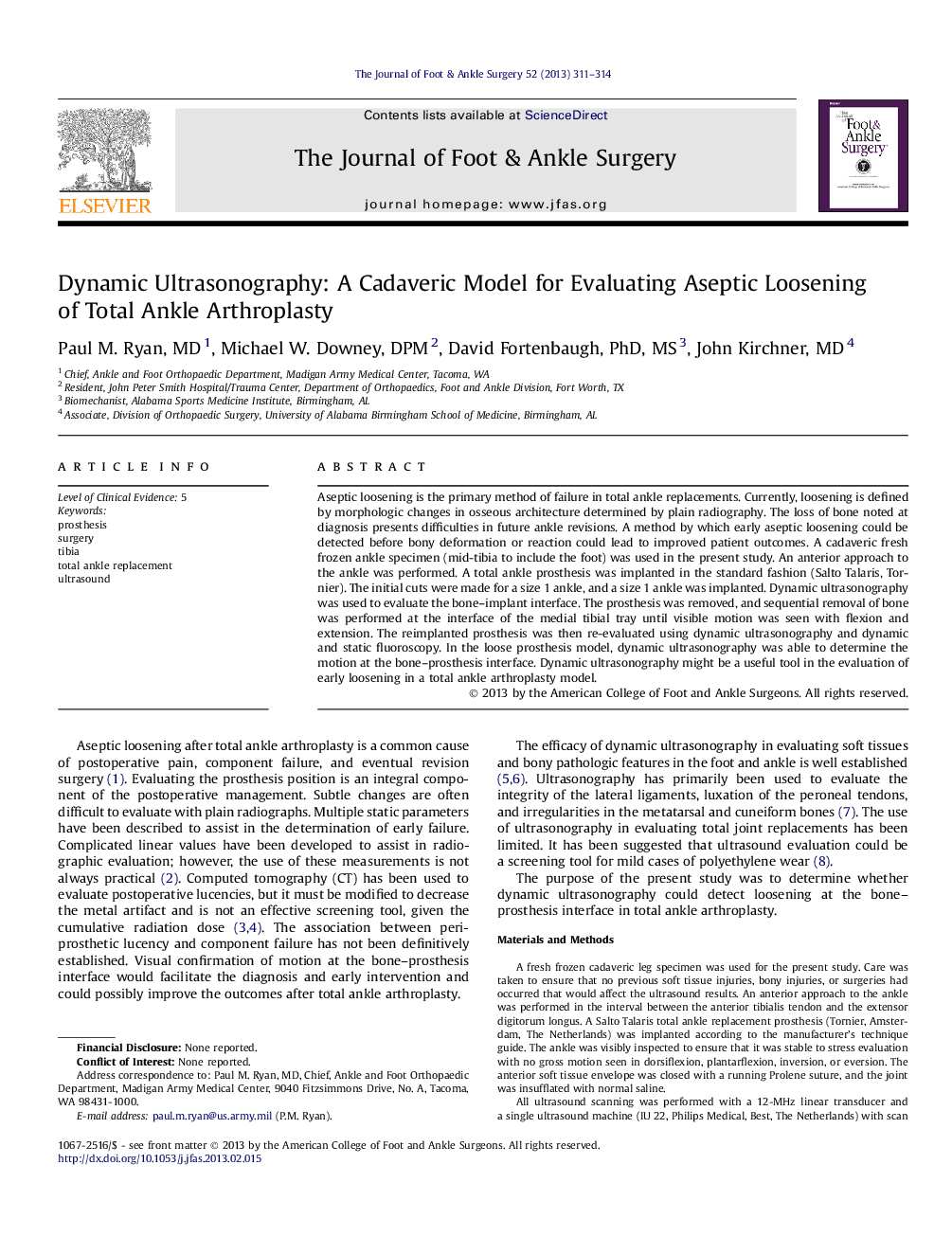| Article ID | Journal | Published Year | Pages | File Type |
|---|---|---|---|---|
| 2722555 | The Journal of Foot and Ankle Surgery | 2013 | 4 Pages |
Aseptic loosening is the primary method of failure in total ankle replacements. Currently, loosening is defined by morphologic changes in osseous architecture determined by plain radiography. The loss of bone noted at diagnosis presents difficulties in future ankle revisions. A method by which early aseptic loosening could be detected before bony deformation or reaction could lead to improved patient outcomes. A cadaveric fresh frozen ankle specimen (mid-tibia to include the foot) was used in the present study. An anterior approach to the ankle was performed. A total ankle prosthesis was implanted in the standard fashion (Salto Talaris, Tornier). The initial cuts were made for a size 1 ankle, and a size 1 ankle was implanted. Dynamic ultrasonography was used to evaluate the bone–implant interface. The prosthesis was removed, and sequential removal of bone was performed at the interface of the medial tibial tray until visible motion was seen with flexion and extension. The reimplanted prosthesis was then re-evaluated using dynamic ultrasonography and dynamic and static fluoroscopy. In the loose prosthesis model, dynamic ultrasonography was able to determine the motion at the bone–prosthesis interface. Dynamic ultrasonography might be a useful tool in the evaluation of early loosening in a total ankle arthroplasty model.
